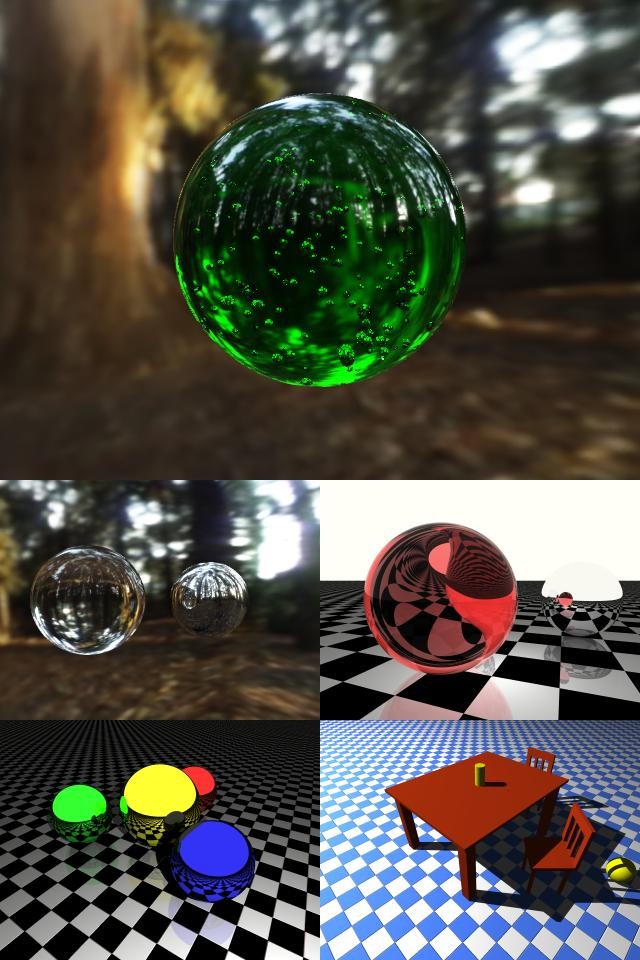
Image Description, by Trenkwalder Markus

Lately I was interested in raytracing. I started writing my own raytracer
with C++ in December 2004, utilizing my own math3d++ library for the
necessary vector math, and was able to get the first results within less
than a week.
I continued development at a much lower pace and added documentation to the
source code, so that others, reading my code, could understand what i
intended. To be able to test new materials and pixel sampling patterns for
antialiasing I created some simple test scenes which you can see in the
images.
Most of the scenes feature perfect spheres with different materials applied
to them. The checkerboard texture in the images is a procedural texture. In
bottom two images there is also a procedural bumpmap applied to it.
The top image and the left image in the second row feature High Dynamic
Range (HDR) rendering. All the light in these scenes comes from a HDR
cubemap.
Appart from manually unrolling small loops in the my math3d++ library (which
speeded things up quite a lot) the raytracer does not use any optimizations!
On my computer (Athlon TB 1.2 GHz) it takes 1.19 seconds to render the right
scene in the second row at a resolution of 640x480 pixels with 1 sample per
pixel (not that fast).
Source code can be downloaded at http://trenki.gippsbiz.com/raytracer/
|
|

